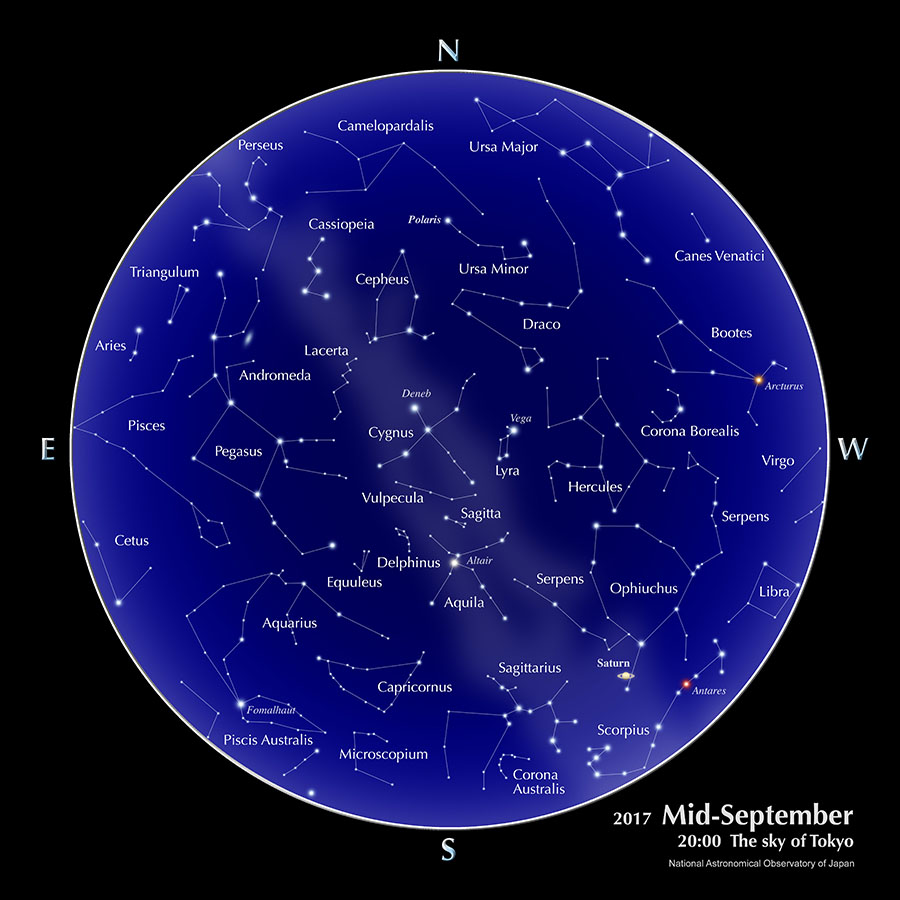The sky of Tokyo, Calendar, Planets (September, 2017)
The sky of Tokyo

Calendar (September)
| 5 | Mercury at stationary point / Neptune at opposition |
| 6 | Full Moon |
| 12 | Greatest Western Elongation of Mercury |
| 13 | Last Quarter Moon |
| 18 | Respect-for-the-Aged Day [Keiro-no-hi ](national holiday) |
| 20 | New Moon |
| 23 | Autumnal Equinox Day [Shubun-no-hi] (national holiday)/ Autumn equinox (Sun’s ecliptic longitude 180°) |
| 28 | First Quarter Moon |
Planets
- Mercury
- Mercury is positioned low in the eastern sky right before sunrise. It reaches its greatest western elongation on the 12th. From the 10th to the 16th, Mercury’s elevation at 30 minutes before sunrise is higher than 10 degrees as seen from Tokyo, making observation easy. From the 10th to the 16th, its brightness is 0.1 to -0.7 magnitude.
- Venus
- Venus shines brightly low in the eastern sky before sunrise. Its brightness is -4.0 to -3.9 magnitude.
- Mars
- Located in the constellation Leo, Mars is positioned low in the eastern sky before sunrise. Its apparent location is close to the Sun making it unsuited for observation.
- Jupiter
- Located in the constellation Virgo, Jupiter can be seen low in the western sky after sunset. At the end of the month, it sets 1 hour after sunset, making observation difficult.
- Saturn
- Located in the constellation Ophiuchus, Saturn can be seen in the southern to southwestern sky after sunset. Its brightness is 0.4 to 0.5 magnitude.
Source: Ephemeris Computation Office, NAOJ
With the “Sky Viewer” you can easily explore the appearance of a typical urban night sky (planets and constellations are visible). The Celestial Phenomena section of the glossary explains the planetary phenomena terms: greatest elongation, opposition, conjunction, stationary, etc.